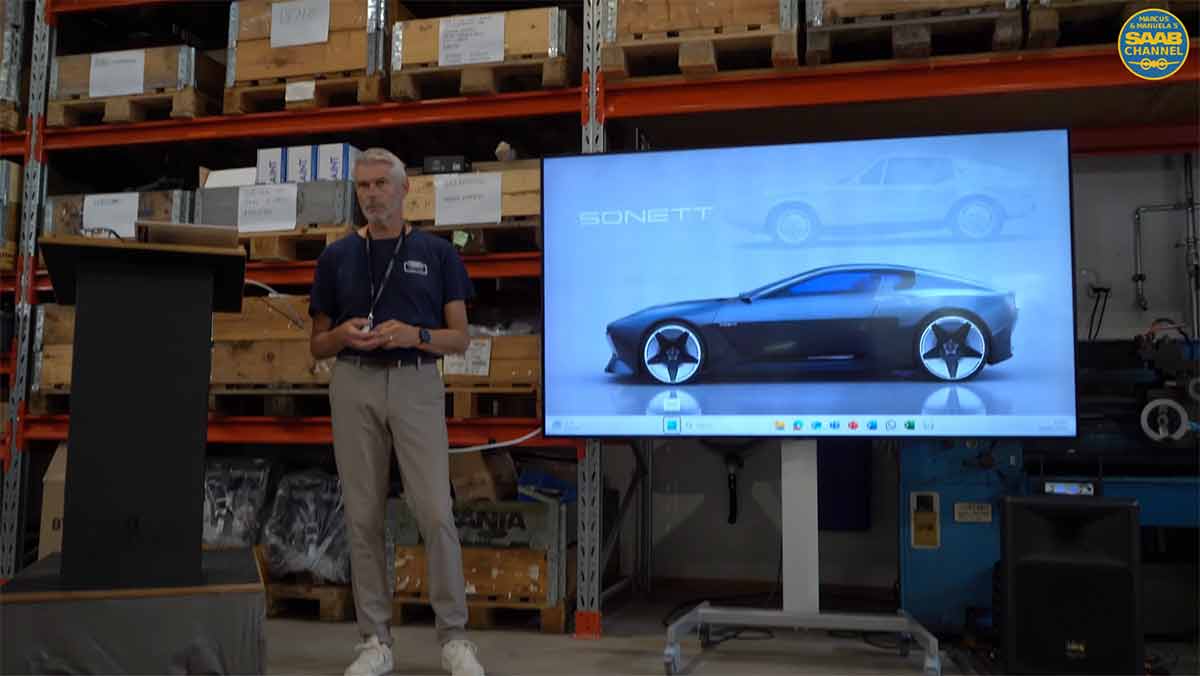Introduction — A Saab Story Filmed for the World
When Marcus & Manuela’s Saab Channel turned their cameras toward the Emily GT, they weren’t just capturing another electric car — they were documenting what could have been the most ambitious EV ever to emerge from Trollhättan since Saab’s bankruptcy.
The duo, long-time chroniclers of Saab culture, have spent years traveling the globe to record club meets, factory visits, and rare prototype stories. This time, their lens focused on a car that fused Saab’s engineering DNA with cutting-edge EV tech — all under extreme deadlines and corporate pressure.
Watch Marcus & Manuela’s full Emily GT coverage here:
Despite the lack of active operations, NEVS continues to search for investors willing to back the Emily GT. Nina Selander, the determined CEO, remains the torchbearer for this vision, alongside Saab veteran Frank Smit, who has tirelessly championed the project even after leaving NEVS.

Their efforts have recently gained attention from industry consultants and automotive insiders, reigniting interest in what could be the most advanced Saab-related car since the brand’s demise.
The Assignment in China
The Emily GT story began with an unexpected call from China. Evergrande, NEVS’s parent company, allocated a budget of $30 million for an electric grand tourer program. For the Trollhättan team, this was a bittersweet moment. They had been largely sidelined in previous Evergrande EV initiatives, watching from the sidelines as Chinese operations took the lead.
Now, they were finally in the driver’s seat — but the challenge was immense. The brief: design, engineer, and deliver ten fully functional electric sedans capable of standing alongside Europe’s most prestigious grand tourers.
10-Month Countdown
Initially, the project was given a six-month deadline, a timeframe Frank Smit bluntly told management was “physically impossible.” After intense negotiation, the timeline was extended to ten months — still tight by any industry standard.
The team would need to work in parallel: body design, chassis engineering, drivetrain development, and interior design all happening at once. Every week lost could jeopardize the final delivery. There was no room for traditional automotive bureaucracy – NEVS would have to operate like a motorsport team on a deadline.
From Sketch to Reality
The first months were dominated by turning sketches into physical, ergonomic designs. The concept car proportions had to be adjusted to meet European safety regulations, crash standards, and real-world usability. Door apertures, seat positions, and sight lines all had to be recalculated, often forcing last-minute design changes.
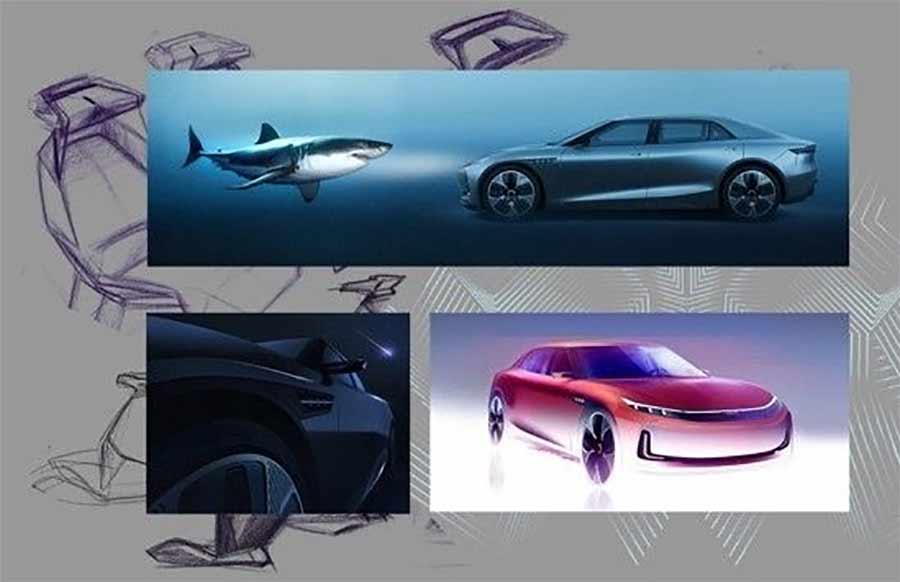
The team worked closely with former Saab designers and engineers, many of whom had contributed to the Saab 9-5 NG and Aero X concept. This continuity of talent ensured the Emily GT carried subtle Saab hallmarks — the wraparound windscreen feel, driver-centric controls, and uncluttered Scandinavian minimalism.
Rapid Prototyping and the ‘Monster’ Mule
To validate the drivetrain and suspension before the Emily GT body was ready, NEVS engineers modified a Saab 9-3 chassis into a rolling test bed nicknamed the “Monster Mule.” It housed the in-wheel motor system, active dampers, and air suspension, allowing real-world shakedown tests months before the first Emily GT body shell was completed.
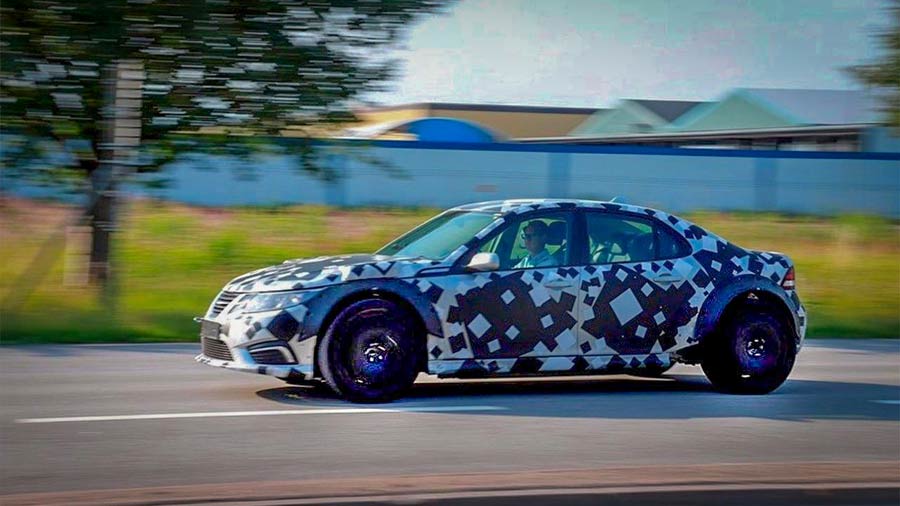
This approach echoed Saab’s tradition of building mules — the same method used during Saab 9000’s development. The Monster Mule looked ungainly, but it proved the hardware could deliver the promised supercar-level acceleration with grand tourer comfort.
Pandemic Obstacles and Supply Chain Triage
Then came COVID-19. Travel restrictions and lockdowns made international supplier coordination a nightmare. The original tooling supplier in Asia was dropped in favor of a German manufacturer known for reliability and precision. This decision cost more but avoided the risk of late deliveries.
Key components – from the in-wheel motors to the custom aluminum brake discs — had to be sourced through unconventional channels. Engineers sometimes hand-carried parts through airports when shipping delays threatened to halt progress.
Innovations in the Emily GT
The Emily GT wasn’t just a handsome EV — it was packed with genuine innovation:
- In-wheel motors for each corner, providing precise torque vectoring.
- Integrated braking within the wheel hubs, with corrosion-proof aluminum discs.
- No central motor or transmission tunnel, freeing up cabin space for a truly airy interior.
- Adaptive air suspension and active dampers tuned for both autobahn stability and Scandinavian winter comfort.
These choices weren’t gimmicks — they were engineering solutions rooted in Saab’s ethos of safety, efficiency, and driver engagement.
Testing and First Drives
Testing took place on Volvo’s proving ground, just 15 minutes from Trollhättan. In one memorable session, the Emily GT hit full speed capability within the first 10 minutes of driving, astonishing the test team.
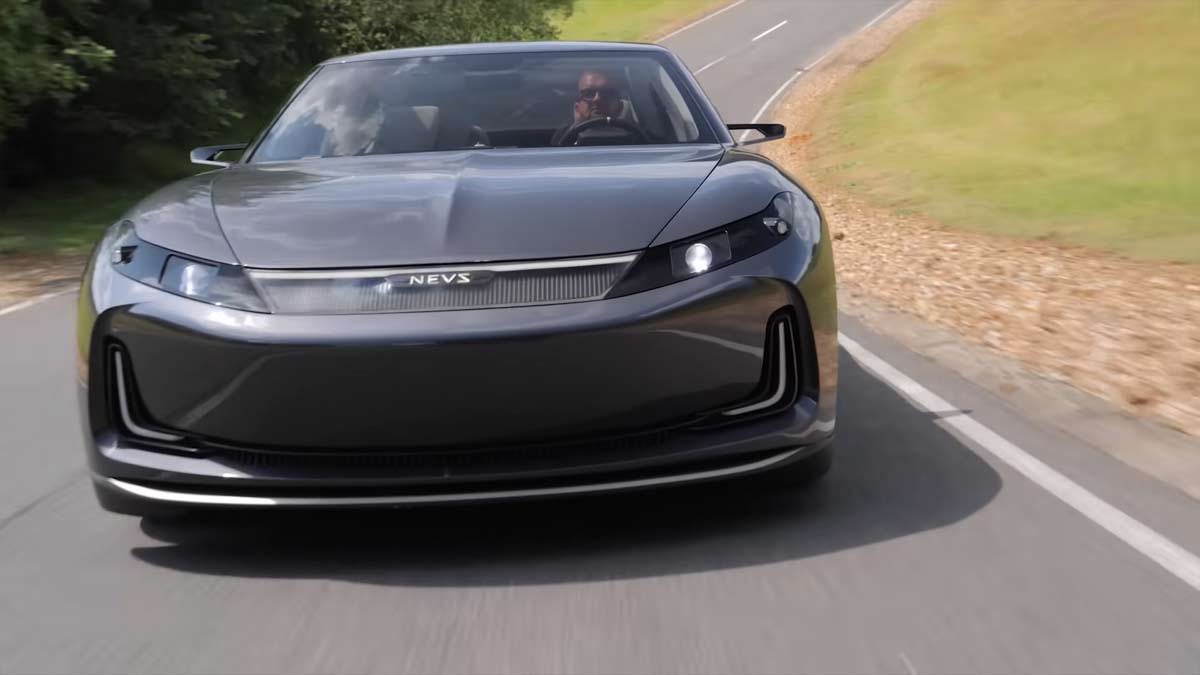
Industry journalists and former Saab engineers who got behind the wheel described it as “effortless, planted, and shockingly quick.” The instant torque of the in-wheel motors combined with the chassis tuning to deliver a feeling that was neither purely sports car nor limousine — it was something entirely new.
Funding Collapse and Halting Production
Just as momentum built, disaster struck. Evergrande’s financial troubles hit NEVS hard. Payments stopped, and the ten-car target shrank to six completed prototypes. The rest of the program was frozen.
Rather than mothball the project in secrecy, Frank Smit and Nina Selander decided to publicly showcase the Emily GT. If NEVS couldn’t build it, perhaps a new investor could.
Public Reveal and Media Attention
The gamble worked — for a while. Auto Motor & Sport, Top Gear, and countless automotive blogs covered the Emily GT’s debut. Videos went viral in the Saab community and beyond.

Investors showed interest, including EB Electra, but deals collapsed before signatures were inked. The clock kept ticking, and the prototypes sat waiting for a second chance.
Investor Hunt and High-Profile Encounters
Frank Smit’s investor search took him far from the factory floor — even to exclusive golf clubs, where he pitched the Emily GT to some of the world’s wealthiest individuals. He also spoke with Victor Müller, the controversial former Saab owner, who was impressed by the project’s ambition.
Yet in the world of EV startups, vision isn’t enough — you need capital, and lots of it.
What Could Have Been — The Emily Model Range
Had funding continued, the Emily GT would have spawned a full model range:
- Four-door sedan
- Cabriolet
- Shooting brake
- Coupe
NEVS projected 6,000–10,000 units annually, with a price point around €125,000. Positioned as a Scandinavian answer to Porsche’s Taycan and Aston Martin’s Rapide E, it could have been Trollhättan’s most significant export in decades.
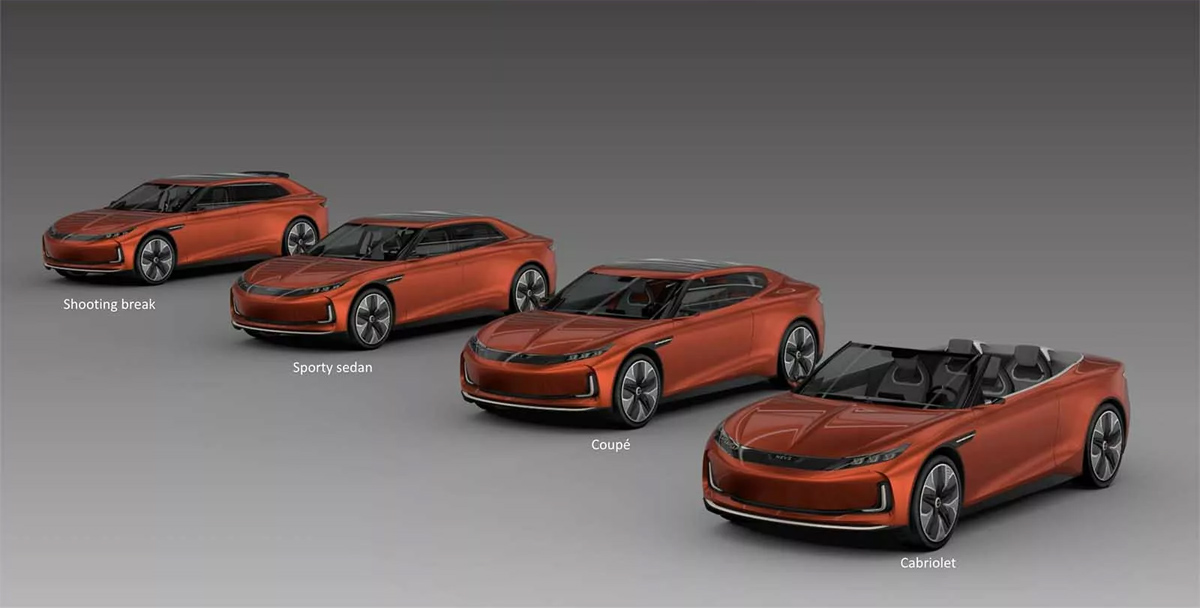
Sonett Revival and the Road Ahead
In a twist that bridges Saab’s storied past with its electric future, Frank Smit has acquired the rights to the Sonett name and is actively crafting a new narrative — not just through engineering, but through design collaboration and visionary concepts.
One standout development is the involvement of Hirash Razaghi, former Chief Exterior Designer at NEVS, whose concept art for the Sonett IV EV reimagines the classic Sonett silhouette for the modern electric era. Razaghi’s design pays homage to the original sports coupe with clean, aerodynamic lines and contemporary proportions, blending heritage with innovation.
This concept underscores how deeply the Sonett legacy resonates in Frank’s revival plans — not as nostalgia, but as a refined foundation for the future.

Frank’s ambition is bold: to bring back Sonett not only as a sleek sports car but also to explore variants like an SUV, employing the Sonett name as a versatile platform for premium, emotionally resonant EVs. This dual approach leverages storied legacy and modern consumer trends, positioning Sonett as both tribute and trendsetter.

The road ahead is challenging — from securing funding to refining engineering into mass-market reality — but Frank Smit and Nina Selander believe in the power of perseverance. The Saab community, a passionate network of enthusiasts and insiders, has already signaled strong support. With compelling design direction from Razaghi and a clear strategic vision, the Sonett revival stands as more than a dream — it’s a tangible, design-led continuation of Saab’s spirit.
A Project with a Soul
The Emily GT may be on pause, but it’s far from dead. Frank Smit’s determination, Nina Selander’s leadership, and the storytelling of Marcus & Manuela ensure the world hasn’t forgotten.
For Saab enthusiasts, this isn’t just another EV — it’s a reminder that Trollhättan’s engineering spirit still has unfinished business.

